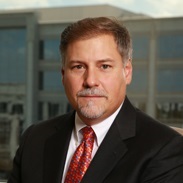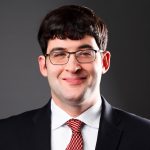When a prospect faces a choice between different law firms, the decision can come to rest on one critical factor: Trust. But that trust must extend to every level of the law firm, from the top attorney to the receptionist. And trust comes from professional credibility.
With 77% of consumers saying that they want to know about a lawyer’s experience and credentials before they make their choice, it’s clear that credibility plays a crucial role.
Establishing credibility isn’t something you can achieve overnight, but there are several steps you can take to start building a strong reputation for your firm.
Provide a great customer experience
Delivering a great experience at every touchpoint is one of the most effective ways to establish credibility for your business. Your reputation is built on the experience of your clients, so it’s crucial that their impression of you is positive.
Talking to people in a caring and professional manner is a vital part of excellent customer service, and this is especially true in the legal profession. It’s important to remember that people are often calling in difficult circumstances, so combining efficiency and empathy is key. People want to feel their concerns are being taken seriously and know you will be with them every step of the way.
Just as important, however, is maintaining that professional experience across every stage. If the first phone call goes well but you don’t follow up, clients will start to lose trust. Eighty-two percent of people say that a timely response when they first contact a lawyer is important to them, so don’t forget about consistency.
A case management system like Clio or PracticePanther can be a great way to keep everything organized so that nothing slips between the cracks. Using technology to streamline your processes can help you stay on top of things and enable your firm to be more proactive about different client touchpoints.
Above all else, people simply want to feel heard. From a new prospect’s very first call to ongoing correspondence with clients, people need to know that when they choose your firm, they’ll be taken care of. Prove it to them in the very first impression and always remember that the first impression could be the last impression.
Client reviews
More great reviews = more credibility. Reviews allow people to see at a glance whether or not they can trust you. With 92% of consumers saying they hesitate to make a purchase when there are no customer reviews, it’s clear that reviews are a hugely influential factor when it comes to business credibility.
Well-known third-party reviews provide a stronger form of social proof than anything you post on your own website, so try to ensure there are a few different ways for people to leave reviews of your business, such as Google, Trustpilot, and Facebook.
Of course, we all want reviews that describe us as geniuses, miracle workers, and superstars, but the reality is not everyone will deliver such high praise.
But negative reviews can still be a great opportunity to build credibility and trust. For one thing, a total absence of negative reviews can appear suspicious. But negative reviews are also an opportunity for you to reply to and address concerns. By responding to negative reviews in a thoughtful way, you can demonstrate your compassion and ability to take feedback. It might even result in better ratings overall, so don’t be disheartened.
Testimonials and success stories
A more in-depth version of reviews, testimonials and client success stories are great ways to demonstrate your value to potential clients. By showcasing detailed examples of your work, you can take the reader on a journey and allow them to get a clearer view of how you could help them.
It’s best to focus on clients with whom you have the strongest relationships for these types of endorsements, as they’re likely to make the best case studies. If you know that your firm added value to someone and had a positive impact, don’t be afraid to ask them to feature.
The more endorsements and testimonials you are able to show, the more people will be able to visualize themselves having the same great experience.
Deliver on your promises
When you’re trying to build credibility for your practice, it’s important to ensure that you can deliver on your promises. People value an honest approach, so your messaging should be consistent and realistic.
Don’t make any overly bold claims on your website — it’s great to showcase your achievements, but don’t cross the line into exaggeration and embellishment.
Demonstrating that your work is consistent, reliable, and caring is the best way to build respect and credibility for your firm. People will see through you if you claim that you can move mountains, so avoid anything that sounds over-the-top or boastful, and let your real accomplishments shine through.
Be available
To enhance your credibility, you need to make yourself available. Forty-two percent of consumers say that if they like the first lawyer they speak with, they won’t need to speak with any others. So if you want to make a great impression, you’ll have to pick up the phone in the first place.
Eighty percent of people hang up on a business when they reach a voicemail. It’s easy to miss the opportunity to show prospective clients why you’re the best person to represent them. If nobody answers your phone or your availability is inconsistent, clients are unlikely to trust you in their time of need.
A live legal answering service can enhance your business credibility, allowing every caller to be met with a caring, professional receptionist who will help you build and maintain strong client relationships. It’s also crucial that a live person answers your calls 24 hours a day because many times people call during the off hours. Missing these calls can mean missing the opportunity for the case in turn hurting your credibility. A legal reception service like LEXReception can help with your calls. Visit LEXReception to find out how trained legal receptionists can help your firm to provide exceptional customer service, every time.
While establishing credibility is a long-term strategy, by following these steps, you can start building a reputation to be proud of.
 Joe Patrice is a senior editor at Above the Law and co-host of Thinking Like A Lawyer. Feel free to email any tips, questions, or comments. Follow him on Twitter if you’re interested in law, politics, and a healthy dose of college sports news. Joe also serves as a Managing Director at RPN Executive Search.
Joe Patrice is a senior editor at Above the Law and co-host of Thinking Like A Lawyer. Feel free to email any tips, questions, or comments. Follow him on Twitter if you’re interested in law, politics, and a healthy dose of college sports news. Joe also serves as a Managing Director at RPN Executive Search.




 Kathryn Rubino is a Senior Editor at Above the Law, and host of
Kathryn Rubino is a Senior Editor at Above the Law, and host of 



 Tom Kulik is an Intellectual Property & Information Technology Partner at the Dallas-based law firm of
Tom Kulik is an Intellectual Property & Information Technology Partner at the Dallas-based law firm of 


 Jordan Rothman is a partner of
Jordan Rothman is a partner of 


